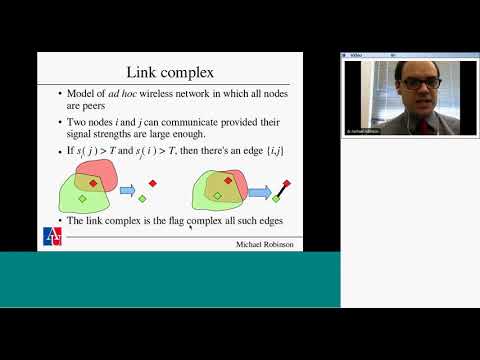Description:
Explore the application of sheaf theory to wireless communications modeling in this 57-minute lecture by Michael Robinson. Delve into an abstracted methodology that avoids high-fidelity specifications, and discover how topology, simplicial complexes, and persistence concepts tie into physical models. Learn about link and interference complexes, network activation, and the wireless activation sheaf. Examine sections of activation sheaves, regions of influence, and persistent homological invariants. Investigate interference filtration through a simulation example and analyze results for random networks. Conclude with insights on lifting queues to switches, categorification, and an experimental setup using the ns-2 network simulator to generate traffic.

Sheaf Based Modeling of Wireless Communications
Add to list
#Mathematics
#Geometry
#Topology
#Algebraic Topology
#Engineering
#Electrical Engineering
#Telecommunications
#Wireless Communications
#Simplicial Complexes
#Sheaf Theory